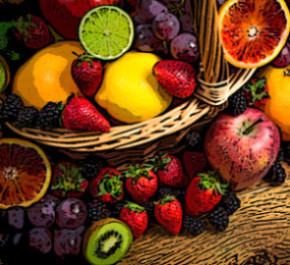In Other Words – Euphemisms In Wine Journalism.
Chapter Six, Part One.
 Once you’ve learned to decipher wine’s elusive qualities you may also need some tips on how to express your observations. In addition to the correlation between the flavors found in wine and the flavors found in your average fruit basket, you’ll want to describe wine’s appearance, texture, weight, oak, and umm … what’s that other one? Oh yeah, arsenic.
Once you’ve learned to decipher wine’s elusive qualities you may also need some tips on how to express your observations. In addition to the correlation between the flavors found in wine and the flavors found in your average fruit basket, you’ll want to describe wine’s appearance, texture, weight, oak, and umm … what’s that other one? Oh yeah, arsenic.
We turn to wine critics for help with these thorny descriptors because they are so much more than mere wine aficionados. That’s right, wine critics are also self-aggrandizing blowhards. No wait! That’s not it! I meant to say they are also writers.
Writers have created much of the lexis of wine analysis. This goes a long way towards explaining why the language of wine employs so many euphemisms, similes and metaphors. I find these colorful tools are essential for describing wine and impressing girls.
One of the ironies of describing wine is that occasionally an accurate description of a delicious wine doesn’t sound very delicious. If you want to make your wine analysis sound appealing to your audience, you must do as the wine writers do. You must sharpen your euphemism skills.
Suppose you take a sniff of a wine and it smells like a horse fart in an elevator (I know – a horse in an elevator reference is wrong on so many levels but I just can’t rise above it). While this description may be spot on, it isn’t very appetizing. To avoid nauseating your audience, you need a suitable euphemism. You’re in luck. The wine press has already coined a term for this particular scent. This wine exhibits barnyard aromas. My Uncle Ralph lives on a farm and he knows it’s time to clean out the barn when it starts to smell like an old bottle of Chambolle-Musigny.
Now imagine you sample a wine and find it very light-bodied. That’s not necessarily a bad thing, but if the wine you’re analyzing is typically full-bodied, light-bodied may have a negative connotation. Once again, you need a euphemism (especially if you’re getting paid to make a wine sound appetizing). Thin, skimpy or dainty may be suitable euphemisms if you’re describing Mary Kate Olsen but they certainly don’t portray your wine any more favorably than light-bodied. To make this wine sound enticing, you find it to be elegant, delicate, or understated.
You may also find yourself struggling to describe the tactile sensations of wine. If the only textural impression you can identify comes from searing acidity you may be in need of a euphemism. After all, searing acidity may be a welcome component in many wines but it sounds like something the super-villain has planned for James Bond’s demise. I don’t know about you, but if the sommelier says my wine selection displays searing acidity I might feel inclined to dress for dinner in a hazmat suit. So euphemistically speaking, you find this wine to be crisp, zesty or bracing. Very often crisp wines, with their palate cleansing properties, are perceived to be refreshing. Now you have a euphemism for your euphemism. You can start your description, review, or shelf-talker with the reassuring words; “This wine is crisp and refreshing!”
Wine jargon is loaded with recurring euphemisms and as you learn more about wine you will find these phrases and terms assimilating into your wine vocabulary. One day you’ll find yourself referring to a wine that tastes like dirt as earthy. Wines you once thought tasted metallic will feature graphite-like minerality. Wines with too much sulfur will smell like … well they’ll always smell like rotten eggs – there’s no euphemism for that.
Certain Sauvignon Blanc’s possess a distinctive aroma that can definitely benefit from a euphemism. Many reviewers use the pleasing phrase “smells  like an Elderberry bush” when describing this pungent aroma but I prefer the interpretation formed by wine critic Oz Clarke. So profoundly accurate was his description that it has become a mainstay of wine terminology. I speak of course of his proclamation that Sauvignon Blanc smells like “cat’s pee on a gooseberry bush.”
like an Elderberry bush” when describing this pungent aroma but I prefer the interpretation formed by wine critic Oz Clarke. So profoundly accurate was his description that it has become a mainstay of wine terminology. I speak of course of his proclamation that Sauvignon Blanc smells like “cat’s pee on a gooseberry bush.”




















